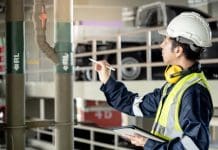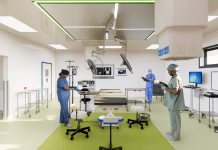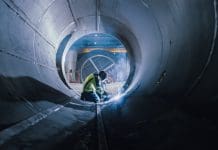Ben Sheath, VP and managing director at Siemens PLM Software, takes a look at the value of the digital twin in enabling flexible manufacturing, reducing time to market and cost, all while improving quality
What is a digital twin?
Let’s think of the digital twin in three twins. So we think about it in terms of the digital product twin, the digital production twin, and the digital performance twin.
The digital product twin
The digital product twin is everything you need in a virtual world to be able to create your idea and bring it to life. It’s not just what people might think of in terms of, say a 3D model, it’s all of the simulation; it’s the documentation that defines what it’s meant to do and how it’s meant to be tested. This encompasses everything from the software that’s going to interact with the product, through to the electronics. So, it’s the whole system of that product.
Digital production twin
This breaks down into two areas:
- How am I going to make this? What’s the sequence of order to bring this idea together?
- The facility in which I’m going to make it – What’s the production line? What robots am I going to use? Where’s the human/robot interface going to sit? What’s going to happen at each workspace? How can I optimise the production area?
Digital performance twin
Performance of the production twin – How well is my production line performing? Is this robot working at the right speed? So it’s actually the performance of the thing you’ve made as well as the asset that sits at the end of it. It can provide information to you as the owner/operator or perhaps someone that is providing a support contract so they can spot trends that might need early maintenance or might enable you to extend life.
They key thing is a ‘digital thread’ that joins all of these product twins together. The data throughout is used in each stage to drive back into one another.
How are digital twins being used in manufacturing?
If you were to think about an automotive industry then the digital twins are enabling people to do significantly more testing of the product before it gets made. So you know that you can design-out performance problems, whether that is quality or manufacturing issues before you commit to doing anything. You can optimise software performance and air flow… all of those key things that can ‘bite you’ later on.
If you’re producing a formulated product, say shampoo, you can use the digital twin to model how those fluids mix, so you can optimise the materials you are using and how they’re mixing them before they go into the bottle. You can also minimise spillage and optimise the design to minimise plastic.
You can also optimise the facility you’re using to manufacture something. You can minimise downtime, and keep a close eye on your maintenance schedules.
Regardless of what industry you are in it’s all about being able to do things in a virtual world before you do it in the physical world, meaning you’re able to iron out all the problems before you do it. Anybody that is thinking of making something or simulating how they are going to make something, what they want to do is get it right first time. They want to hit time, cost and quality. The virtual world enables them to do that and they can send their products down the manufacturing line with a lot of confidence that it is going to go right.
What impact are digital twins having on the manufacturing industry?
A number of different areas, for example the floor space within a manufacturing facility, by creating a digital twin and optimising the production line you can reduce the floor space and the capital investment because you’ve optimised the demand.
You can also optimise the quality.
In a manufacturing context, it’s about improving quality, having greater flexibility, putting multiple variations of the same product down the same production line, and minimising downtime to get more use out of your capital asset. It’s about reducing energy (reducing waste). Deliver more for less!
What are the positive effects of digital twins?
For me, it’s really rather exciting. You think about some of the pressures that the industry is facing in relation to productivity, the use of digitalisation can significantly improve this. It helps the UK’s productivity dilemma greatly.
It can help manage skills and the skills transformation. With people facing a more digital workplace, you can provide better quality instructions and training to operators within the production facility.
Again, material waste reduction and energy reduction are massively impacted.
Digital twins also allow for a wider benefit to the business as a whole. You are able to deliver a more flexible/rapid experience for the client. It’s almost like an engineer to order experience.
Do you think there is anything holding back the use of digital twins?
I think it can seem a bit big and complicated. One of the things you can focus on is the ability to take multiple steps to an end goal. You don’t have to have a full digital manufacturing process, you can incorporate modern digital capabilities in workstations as you refresh and carry out maintenance activities in a production facility.
Pretty much every company that we talk to is digital, very few people have drawing boards, very few people are working with pieces of paper, they’re creating things digitally now. They’re creating digital information and it’s the joining of this information that maximises the value of the digital thread.
Looking at the full digital experience can seem a little intimidating, so what we have organisations do is take value-based steps to get there. It’s then done in a controlled and realistic manner, where the company, the staff and the product development manufacturers can absorb all of the information.
What do you predict will happen in the future for digital twin technologies?
Without my crystal ball, I couldn’t say for sure! But, I do think there are some really exciting trends going on.
I think we’re going to see more additive manufacturing. It’s not just about making things you used to make using additive, it’s about redesigning them to optimise the additive manufacturing process. By doing this you increase strength, reduce materials and reduce weight. I think we’ll see a lot more investment in additive manufacturing as a consequence.
I think we’ll see a lot more data analytics, looking for trends and gathering data from your production facility or your asset and then using this data to make intelligent decisions around manufacturing performance and product performance that can influence design and manufacturing quality/cost.
We’re going to witness more human-robotic interactions. We’ll see more production lines with humans working in unison with automation. If they’re ‘co-habiting’ they can deliver a much better manufacturing process.
The level of machine learning is also likely to increase. So, the machine will begin self-optimising itself on products, environments and tasks.
How far is Siemens on its digital twin journey?
The wider Siemens is adopting digital twins very aggressively to be able to deliver the products our customers want. We’re very well established on this journey, Siemens has been thinking about this concept of digital twins and the virtual-physical interface, for many years, 25 plus years. On that journey, I would say we’ve gotten a good way ahead, in terms of capability and connecting of data flow.
Having said that, we can’t rest on our laurels, we’ve got to keep growing capability to help solve problems for our customers.
 Ben Sheath
Ben Sheath
VP and managing director
Siemens PLM Software
www.plm.automation.siemens.com













